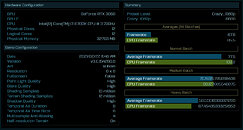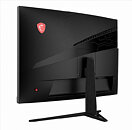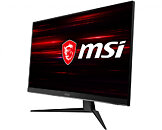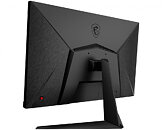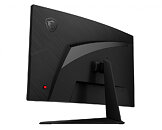
Apple Announces the 2021 iMac, Powered by M1 Chip, Featuring 4.5K Retina Display
Apple today introduced an all-new iMac featuring a much more compact and remarkably thin design, enabled by the M1 chip. The new iMac offers powerful performance in a design that's just 11.5 millimeters thin, with a striking side profile that practically disappears. Available in an array of vibrant colors to match a user's personal style and brighten any space, iMac features a 24-inch 4.5K Retina display with 11.3 million pixels, 500 nits of brightness, and over a billion colors, delivering a brilliant and vivid viewing experience.
The new iMac also includes a 1080p FaceTime HD camera, studio-quality mics, and a six-speaker sound system—the best camera and audio ever in a Mac. Also, Touch ID comes to iMac for the first time, making it easier than ever to securely log in, make purchases with Apple Pay, or switch user profiles with the touch of a finger. Combining the power and performance of M1 and macOS Big Sur, apps launch with blazing speed, everyday tasks feel incredibly fast and fluid, and demanding workloads like editing 4K video and working with huge images are faster than ever. The new iMac joins the incredible family of Mac models powered by M1, including MacBook Air, 13-inch MacBook Pro, and Mac mini, marking another step forward in Apple's transition to Apple silicon. iMac is the most personal, powerful, capable, and fun it has ever been, and customers can order it beginning Friday, April 30. iMac will be available in the second half of May.
The new iMac also includes a 1080p FaceTime HD camera, studio-quality mics, and a six-speaker sound system—the best camera and audio ever in a Mac. Also, Touch ID comes to iMac for the first time, making it easier than ever to securely log in, make purchases with Apple Pay, or switch user profiles with the touch of a finger. Combining the power and performance of M1 and macOS Big Sur, apps launch with blazing speed, everyday tasks feel incredibly fast and fluid, and demanding workloads like editing 4K video and working with huge images are faster than ever. The new iMac joins the incredible family of Mac models powered by M1, including MacBook Air, 13-inch MacBook Pro, and Mac mini, marking another step forward in Apple's transition to Apple silicon. iMac is the most personal, powerful, capable, and fun it has ever been, and customers can order it beginning Friday, April 30. iMac will be available in the second half of May.






